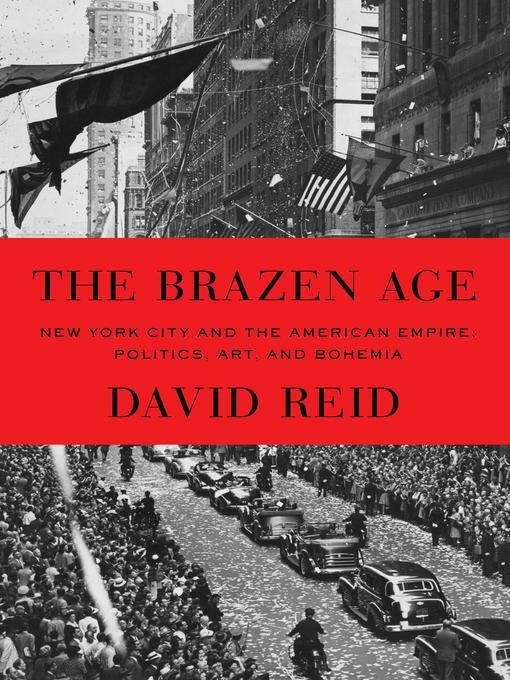
The Brazen Age
New York City and the American Empire: Politics, Art, and Bohemia
کتاب های مرتبط
- اطلاعات
- نقد و بررسی
- دیدگاه کاربران
نقد و بررسی

Starred review from March 1, 2016
No less than Paris in the 1920s, New York City in the 1940s was the center of the world, according to this exhilarating account of the city during that decade. Journalist and editor Reid (Sex, Death and God in L.A., 1992, etc.) begins his rich history with a bang, describing the city's boroughs through the eyes of a gaunt, ailing Franklin Roosevelt during a daylong, 50-mile 1944 electioneering tour in an open car in a cold rain to refute Republican claims that he was ailing. The purpose of the tour, writes the author, was "to demonstrate in the most vivid possible way that...he was alive and laughing." At his death six months later, great world cities not in ruins after World War II were exhausted, but New York flourished. At the time, journalist John Gunther praised NYC as "the incomparable, the brilliant star city of cities, the forty-ninth state, a law unto itself, the Cyclopean paradox, the inferno with no out-of-bounds, the supreme expression of both the miseries and splendors of contemporary civilization, the Macedonia of the United States." This efflorescence benefitted from a flood of European exiles fleeing fascism. Superstars (Einstein, Toscanini, Brecht, Stravinsky) aside, the average American and America's government felt little sympathy, but this represented the greatest transplant of talent since Greek scholars fled to Italy after the 1453 fall of Constantinople. Movie and theater attendance began declining after 1945, but it remained the golden age of print. New York had more than 15 daily newspapers and dozens of smaller ones, and the nation's largest department store, Macy's, contained the nation's largest bookstore. Having read or seen nearly every artifact of this period, Reid delivers his opinion in a score of unrelated but brilliant chapters on iconic New York individuals (Berenice Abbott, Weegee), groups (returning soldiers, homosexuals), politics (the 1948 elections, leftist magazines), and bohemia (Greenwich village again and again). A historical tour de force.
COPYRIGHT(2016) Kirkus Reviews, ALL RIGHTS RESERVED.

March 15, 2016
New York City is an entity unto itself. Even during World War II, a time when citizens of several countries were uniting in ways previously unexplored, New York operated under its own set of rules. Reid (Sex, Death and God in L.A.) writes about "the brazen age" of New York, beginning with Franklin D. Roosevelt's last campaign trip through the city in 1944. The author covers a lengthy period of history with a large cast of characters, making it difficult to keep track of pertinent details. While the narrative describes the art, bohemia, and politics of 20th-century New York, the lack of chronological order means it can be hard to differentiate between sections. VERDICT This study will appeal to readers seeking a history of New York from the beginning of the 20th century to the end of the 1940s, although the attempt to cover several areas means it may not be as comprehensive as some readers would prefer.--Rebecca Kluberdanz, New York P.L.
Copyright 2016 Library Journal, LLC Used with permission.

























دیدگاه کاربران